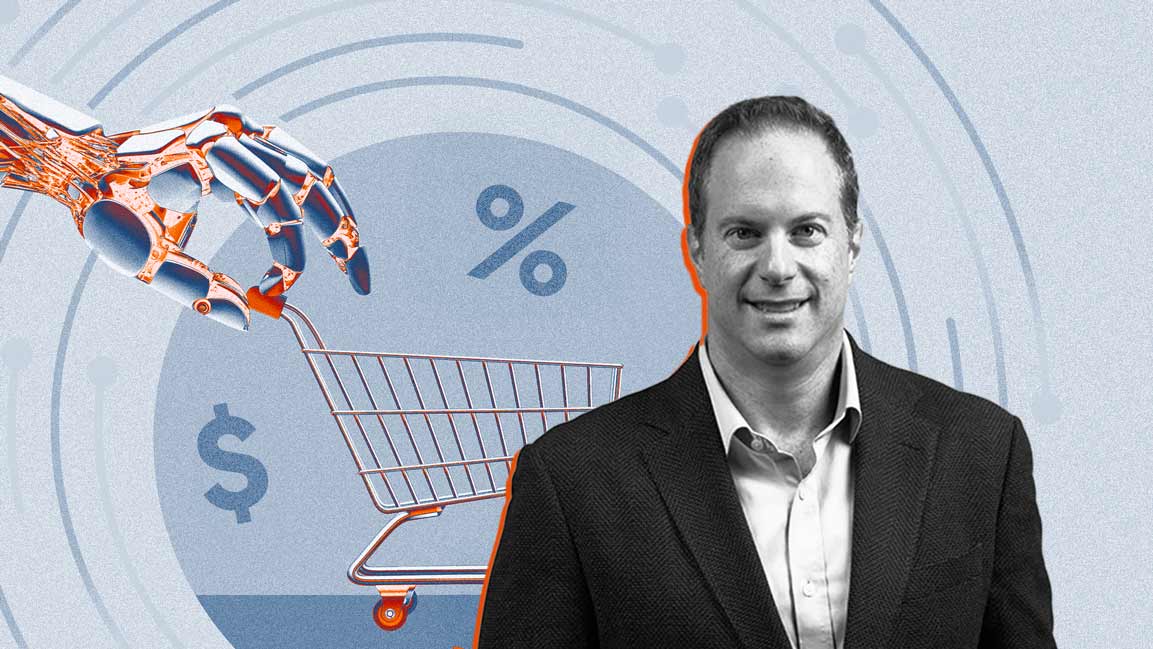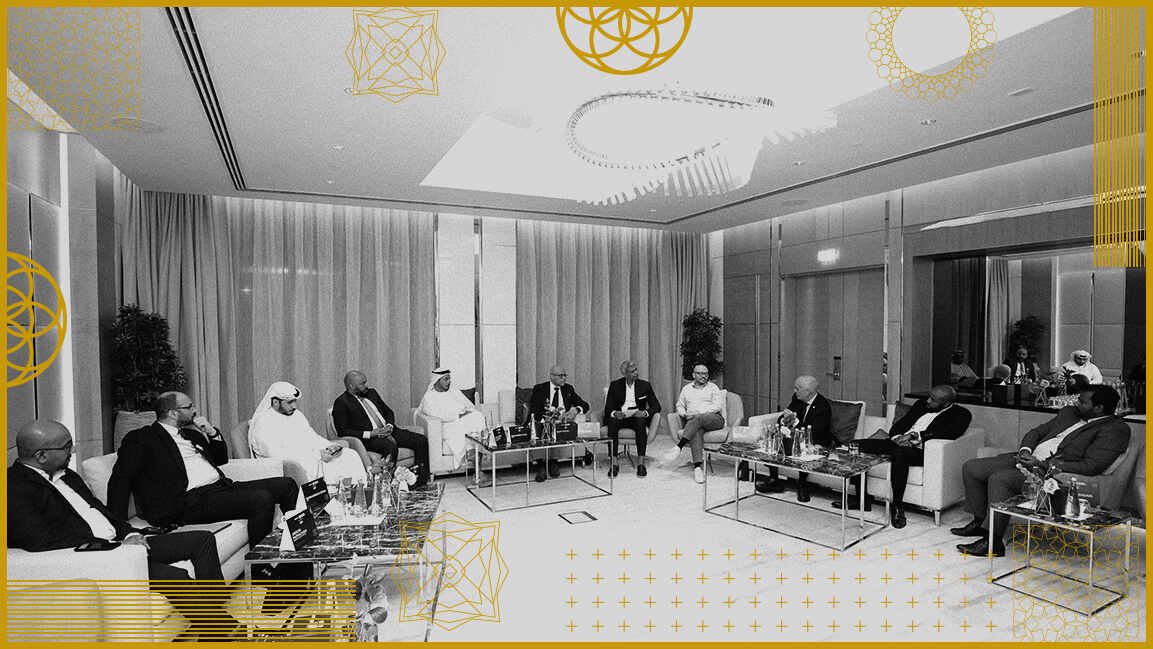- | Visa
Journeys Unpacked – Chalhoub Group and Visa: Payment innovations and technology driving the luxury retail industry
In the third episode of Fast Company Middle East's Journeys Unpacked podcast series, in partnership with Visa, experts deliberate the technology and payment trends taking over the luxury retail space.

Consumer demands have taken a new route in the retail and luxury sectors amid rapid digitization. In response, retailers and merchants have been gearing towards integrating different methods of cashless payments and seamless and secure fintech offerings, as well as utilizing other advanced technologies, such as AR/VR, AI, and machine learning, to provide more personalized experiences.
In the third episode of Fast Company Middle East’s Journeys Unpacked podcast series, Dr. Saeeda Jaffar, Senior Vice President & Group Country Manager—GCC at Visa, discusses with Michael Chalhoub, President of Strategy, Growth, Innovation & Investment and of the Joint Venture department for Chalhoub Group. They explore current payment methods and technology trends advancing the luxury retail sector.
CUSTOMER JOURNEY
The UAE’s luxury market has always been booming, with more than $4 billion spent this year. Dr. Jaffar says this number has “grown by leaps and bounds over the last few years” and will grow even more in the coming years.
Watch the video here:
Chalhoub expects that the UAE is poised for considerable growth*, particularly in high-end fashion and prestige beauty. Where the world is at 5-7% growth, the UAE is poised for 8-9% growth. The UAE also makes up 66% of the sales of the GCC countries and is growing at over 23%, which is way higher than the rest of the region.
“The UAE has become a powerhouse for luxury retail, including prestige, beauty, skincare, jewelry, and fashion, and the two reasons are that we have very strong macroeconomic fundamentals in the UAE and an infrastructure that allows for tourism and mall openings, and the second being that the trend is mainly towards digitalization and e-commerce, which the UAE has been a hub for,” adds Chalhoub.
Meanwhile, e-commerce has been growing at over 44% in the UAE, indicating significant growth for the industry. A hike in tourism is driving some of this retail growth. Additionally, increased expats in the Middle East have influenced population and consumption growth.
However, Chalhoub shares that their client base is mainly from the GCC. “It’s really important to appeal to a local, loyal clientele that stays here over the long term and remains loyal within our boutiques.”
Retaining customers in the long run requires attention to the up-and-coming trends, consumer demands, and loyalty programs.
“We target and segment our customer in a way that allows us to really dig a little bit deeper into the local customer, the gulf customer,” adds Chalhoub.
Of late, the way consumers shop has shifted in many ways. Dr. Jaffar says a number of surveys clearly show that roughly “two-thirds of consumers don’t look at shopping as just physical or just e-commerce. It’s a combination of the two, and you start somewhere and end somewhere.”
Chalhoub calls this the customer journey, whereby the consumer starts by browsing on their phone, being targeted by digital marketing, wondering how the product would fit, going to try them on, pondering the price and the color, and possibly going back home and looking at the same product with some loved ones, and then going back into the store or just purchasing them online.
“More and more, it’s not about the product, but the experience around it. That experience always includes, or at least for two-thirds of the people, at least one digital touch point,” he adds.
TECHNOLOGY AND PERSONALIZATION
Touching on AR, VR, and other technological tools used for shopping, Dr. Jaffar recalls interactive digital mirrors, which people can stand in front of and see what they look like without physically changing anything.
Chalhoub says that more than 50% of the people who enter a luxury beauty retailer do not want to try the beauty products the testers provide.
Instead, they want to envision how they would look through AR offerings.
“In cosmetics, it becomes a little bit more personal because what you wear, you wear them on your skin. It’s been a lot about trying to understand our customers and what they want and need,” he adds.
It’s hygienic, clean, seamless, and personalized. The hyper-personalized experiences address customers’ pain points and present them with tailored solutions.
“The real luxury is speaking to a person in customers’ own language,” says Chalhoub. As partners with many international brands, the retail group prioritizes product localization, working with them on capsule collections on first-time offers that start in the Middle East before entering other markets.
“Hyper-personalization of the experience and the product has been a big focal point for us. We’ve been trying to do our best to introduce it in our stores with our digital platforms as much as possible,” adds Chalhoub.
DIGITIZED PAYMENTS
Cashless payment trends in the MENA region have increased over the last few years, with the majority of people paying by credit or debit cards.
“Cash is not a trend anymore, and credit card payments have been important for us to accept their payments, not just in front of the cash desk, but on the go because that’s what you can do today with your credit card. You can pay wherever you are,” says Chalhoub.
The buy-now-pay-later (BNPL) option is particularly popular with consumers; however, he adds that BNPL comes at a cost. “But it’s a cost that we’re ready to absorb because we want to follow all our customers in whichever way they want to pay and in whichever trend they want to follow.”
Visa recently introduced Visa Installment Solutions (VIS), which enables Visa credit cardholders to convert their purchases into equal, several-month installments at point-of-sale terminals. According to a Visa financial literacy study in the UAE, 56% of consumers surveyed said they would opt for a retailer that offers installments over a competitor that does not, indicating the importance of installments as a fundamental choice consumers demand.
On a more personal note, Chalhoub shares that his phone is his top payment accessory, as it is the one thing people keep wherever they go. “I use my phone to pay and barely carry a credit card anymore.”
Dr. Jaffar echoes his statement, adding that the region has some of the highest tokenized transactions and use of contactless payments. In 2023, adoption reached 98% in the GCC compared to 86% in the CEMEA region. “That’s the great thing about being in our part of the world; we’re always up with the latest and the most innovative solutions,” she says.
“Technological advances in Dubai have been fantastic. To some extent, we’ve managed to keep up with those latest technological trends, and Visa has done a wonderful job doing so,” adds Chalhoub.
*Chalhoub Group Intelligence Reports.
Journeys Unpacked is a series produced by Fast Company Middle East, in collaboration with digital payments leader Visa, to explore how technology, innovation, and digital payments are reshaping travel, hospitality, and digital commerce industries.








































